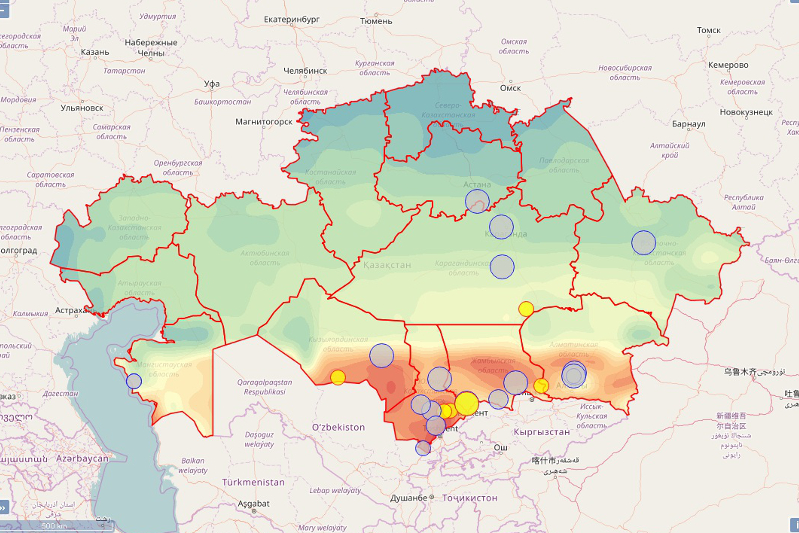ASTANA – Atlassolar.kz, an interactive solar resources atlas providing free access to information to implement solar power ideas in Kazakhstan, was launched in late May in the capital, according to the joint statement released by the Ministry of Energy and the United Nations Development Programme (UNDP).
The web-based resource contains open data of solar resources space distribution. It allows receiving information on the introduction and use of solar energy in the country and makes effective decisions to develop solar energy in various geographic locations.
The atlas data reflect the constantly updated international climate bases. It also provides users with tools for analysis and calculations to increase the validity of management decisions on installing solar power plants (photovoltaic stations).
“The solar energy sector is growing 50 percent annually in the world. Despite the fact that the share of solar energy is relatively low, it will turn into the major source of energy on the planet in the near future. It is attractive because it is inexhaustible, independent of energy prices on world markets, ecologically clean and safe. The use of solar energy does not cause any greenhouse gas emissions into the atmosphere that will contribute to stopping climate change,” said UNDP Kazakhstan Sustainable Development and Urbanisation Unit head Rassul Rakhimov.
The atlas will become one of the tools for attracting investors in the solar energy field and serve as a technical tool for energy-generating organisations, design stations and energy supply systems and companies engaged in selling and installing photovoltaic plants and solar water heating plants.
“The potential is varied according to the conditions and the intensity of solar radiation can be monitored,” he added.
The data will also provide great benefits to solar energy and installation users and scientific organisations. Graduate students can integrate the available information into studies to optimise managing solar power plants or develop new types of solar cells that can use less radiation to produce electricity.
“Investors can learn where and in what area, in what region it is expedient to put their own solar stations according to their economic plan. The website will be of interest to government agencies including regional akimats (local executive bodies) and the Ministry of Energy,” said Rakhimov.
The project was developed by Sapa Pro&Tech, a company composed of scientists, satellite meteorology and energy experts, geoinformation system specialists and web application developers.
The atlas was created under a project of Kazakhstan’s Ministry of Energy and UNDP “providing assistance to the Kazakh government to implement the Green Economy Transition Concept and institutionalise the Green Bridge Partnership Programme.”
It aims to assist the country in executing the concept for green economy transition by supporting law-making initiatives, technical prospects for developing the solar energy sector, sustainable fish farming and aquaculture and supporting and developing the Green Bridge Partnership Programme.
The UNDP is a long-standing partner of Kazakhstan and carries out a number of projects related to the issues of green economy and climate change.




